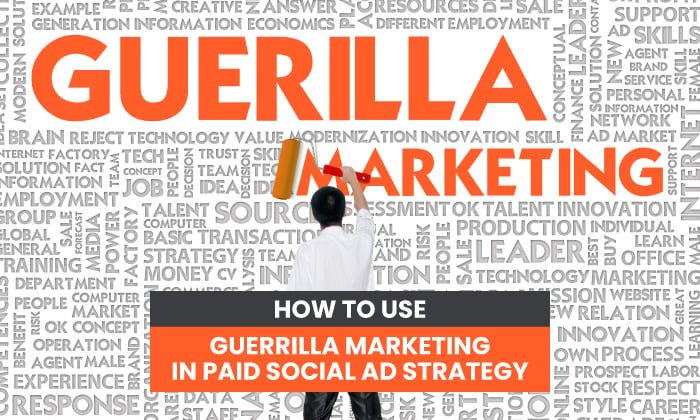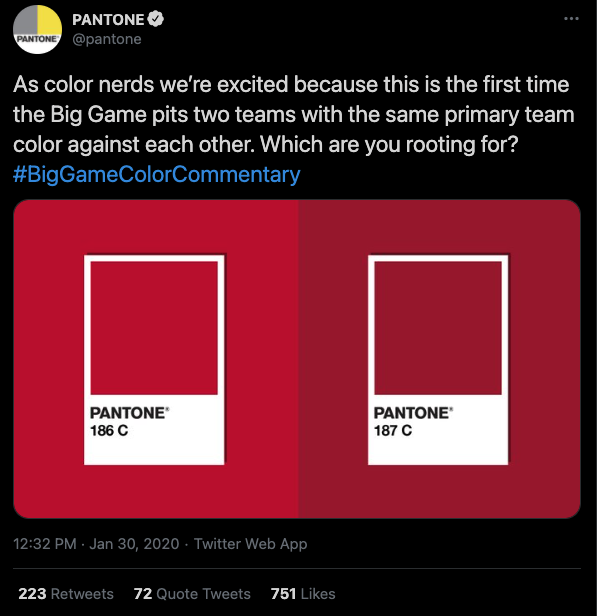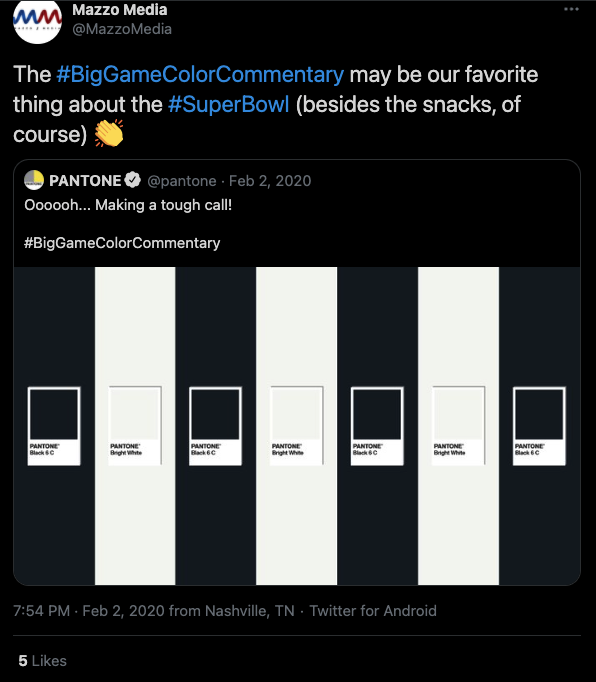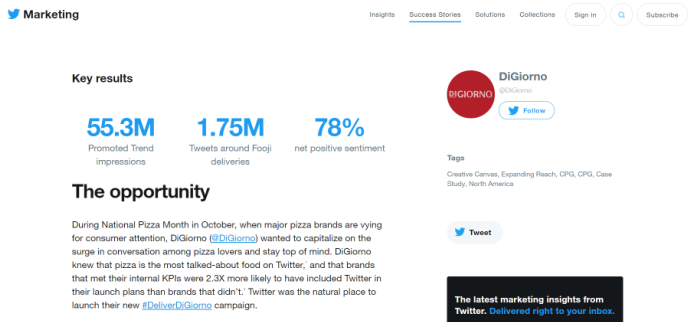How to Use Guerrilla Marketing in Paid Social Ad Strategy
- February 9, 2021
- Uncategorized

For many years, traditional marketing offered brands the choice of print, TV, or radio advertising if they wanted to get the word out about a new product or initiative. By the 1980s and 1990s, as advertisements flooded all media channels, companies began to realize standing out would require offering something different.
Consumers started seeing brand interactions unlike anything they’d ever seen before, and the term guerrilla marketing was coined. With the start of the internet and social media, marketing to customers became a whole new undertaking.
Let’s explore what guerrilla marketing is and how you can use these tactics when building your paid social ad strategy.
What is Guerrilla Marketing?
Guerrilla marketing is a marketing strategy in which a brand or company uses the element of surprise to promote a new product. These tactics may include creative interactions with the public to make an impact.
Guerrilla marketing tactics demand more creativity and imagination than financial investment, and success is often measured by how widely the activation or event is shared.
Guerrilla marketing ideas intentionally go against the grain of traditional marketing by setting their sights on impact.
The goal is to create a buzz about a product or brand, increasing the chance people will buy it or share what they’ve seen and experienced with their friends, who could also be potential buyers.
In social media marketing, this could mean sharing an experience with large communities or followings, creating waves of reaction, or even going viral, which might be considered the biggest success of all.
Why is it Called Guerrilla Marketing?
The term was made popular by the well-known Guerrilla Marketing book by Jay Conrad Levinson. The marketing term borrows from the historical term “guerrilla warfare,” which refers to using unconventional means to achieve a goal, mainly relying on ambush and the element of surprise.
The digital landscape has changed how we use these tactics, as online guerrilla marketing is a bit different than it was in the past, but the concept is the same.
How is Guerrilla Marketing Different?
Guerrilla marketing strategy stands out from other marketing efforts. It is often more about direct interaction with the public or a profound impact on a small targeted group, rather than broad but superficial reach through traditional media outlets. It’s typically the result of a fresh, creative idea that’s given the freedom to build momentum and buzz without restrictions.
6 Ways to Use Guerrilla Marketing in Ad Campaigns
Any company can consider aspects of this marketing style when creating ad campaigns. If you have access to creative minds, and your leadership team is comfortable with some risk, there are ways to borrow from the power of guerrilla marketing.
Remember, what makes these guerrilla marketing examples stand out is how they depart from the norm. That means any company or industry could explore these tactics by merely being different. If you’re willing to get close to your customers and create something fresh and surprising in how they experience your brand, you could benefit.
It might appeal to large established companies who have the resources to pull off big stunts or undertakings, but it may also appeal to small companies hoping to make waves while on a budget.
Guerrilla marketing for startups may also be viable, as these companies are often working with limited marketing budgets.
We’ll look at the roots of each type of guerrilla marketing and explore which ones could work well with your paid social ad strategy. Make sure you have the basics of your social media marketing in place, then keep reading to see how these brands could surprise their audiences and make a significant impact.
1. Stealth Guerrilla Marketing
Stealth guerrilla marketing is advertising something to people without them being aware they are an audience to your campaign. One example would be product placement during a favorite TV show or movie, where you hardly realize you see technology, car, food, or drink brands, to name a few.
With advertising disclosure rules put in place by the Federal Trade Commission, this is a tactic widely discouraged for use on social media. Stealth marketing online could be poorly received, and if you break FTC guidelines, you could be in trouble.
2. Environment Guerrilla Marketing
Environment guerrilla marketing, also known as ambient guerrilla marketing, means marketing to people right where they spend time traveling from place to place. In the physical environment, this could mean advertising in bus shelters, on city benches, or with graffiti or reverse graffiti in busy downtown areas.
This is the kind of advertising you often see incorporated into everyday objects in public spaces like door handles, pool cues, and more.
A great example of this would be the KitKat benches in urban areas, where the planks of the bench were painted to look like the bars of chocolate in a KitKat bar.
3. Astroturfing
Astroturfing is one type of guerrilla marketing where most experts advise proceeding with caution. In astroturfing, companies pay individuals to endorse or promote a product while appearing like real customers.
It can be a delicate balance to execute this memorably without triggering resentment if your audience finds your actions particularly duplicitous.
In a social campaign, this may include fictional stories of characters who are pretending to experience a brand or even imaginary exchanges in the comments of a paid social campaign that garners wider attention.
4. Ambush Guerrilla Marketing
Ambush guerrilla marketing is when a brand finds a way to target or hijack an audience from a large event or another gathering of a large audience. Without formalizing a partnership with the actual event, a brand still might find a way to reroute some of the attention to their marketing, drawing much bigger traffic than usual.
A great example of this would be the Pantone Color Commentary campaign launched on Twitter that piggybacked on the Super Bowl.

The Pantone Twitter account posted live that day, offering what they called #BigGameColorCommentary. They found a way to draw attention and buzz from a large event without being officially connected to it.

5. Street Guerrilla Marketing
Street guerrilla marketing occurs in the street or other public places where lots of people tend to pass through.
You may have seen this when people gather in busy downtown spaces or subway stations to hand out flyers or walk around with sandwich boards, so they can target particular audiences who are present and able to absorb their message.
While street marketing does imply that most of the impact is made with real people in public spaces, there are ways to use this type of contact to attract new followers on social media, by offer promos or coupon codes or through other engagements.
Companies could also use their social media accounts to send people to a physical location to launch an experience.
6. Experiential Guerrilla Marketing
This type of guerrilla marketing includes all kinds of interactive campaigns, experiences, and activations that involve the audience in an experience. The audience members become participants, which creates a personal, memorable experience for each.
These types of campaigns have a powerful potential for word-of-mouth marketing and help people experience the brand.
This marketing type could include outreach like the one DiGiorno launched during their #DeliveryDiGiorno promotion on Twitter. During National Pizza Month, DiGiorno tweeted a promotion encouraging followers to tweet with the hashtag #DeliveryDiGiorno.
Customers who participated got a free frozen pizza delivered to their homes. This promotion garnered over 55 million impressions on Twitter, with just 1100 pizzas delivered.

3 Pros of Guerrilla Marketing
Guerrilla marketing could be an excellent fit for smaller businesses with small budgets and less to lose, where the public might forget any mistakes more quickly. There are definite positives to guerrilla marketing if you’re feeling ready for a challenge.
1. Low Relative Cost
Guerrilla marketing is more about creativity and timing than big marketing spend. Sidestepping deep investment into traditional media advertising and using the idea to gain attention, guerrilla marketing relies on word of mouth and earned media coverage to spread a brand message. It may take time to execute, but the investment will be low compared to the return if it works.
2. Unlimited Creative Potential
Fresh, creative ideas work best here as they’ll have to rise above the chatter of traditional advertising. There are so many social media posts and ads already that it will take a genuinely unique idea to stand out.
However, it rewards the most creative and surprising ideas, meaning the bravest and most innovative brands could benefit.
3. High Potential Return on Investment (ROI)
If you can tap into something unique and timely in a way audiences genuinely love, you may watch your message travel farther than you could have ever hoped. In some cases, campaigns like this make the news and are shared because everyone loves the idea. It could be a low-cost idea that brings in the most exposure.
4 Cons of Guerrilla Marketing
This type of marketing falls into the “proceed at your own risk” category because while the wins can be huge, the losses can be a terrible PR and reputation management lesson. Big brands especially can lose big if things go badly.
Consider the following risks and challenges before you move ahead.
1. Ethical and Legal Concerns
In many cases, the most impactful guerrilla marketing campaigns are either a bit or entirely shady regarding local bylaws and regulations. Can a large established brand risk pushing this envelope? Can a small company afford the potential fines or penalties?
2. Creative Demand Might Be Too High
The power of guerrilla marketing is the creativity and freedom to act on the freshest ideas without restraint. Too much red tape could quash the best ideas long before they’re let loose in the wild.
It’s also possible that you spend time on ideas that simply aren’t creative enough to be worth the risk. A small team might get lucky and pull off an incredible stunt that makes headlines, but many of these tactics require your team to have a deep understanding of marketing, advertising, PR, social media, digital marketing, paid social advertising, and other areas to execute. Does your team have the necessary knowledge?
3. Clarity is Crucial
Occasionally, a marketing campaign misses the mark, or the public misunderstands the message. If this happens with traditional advertising, it can often be corrected before too many people see the ad. With guerrilla marketing, the goal is to have a bright idea picked up and shared by mainstream media and word of mouth.
If you release an idea with this much potential to spread that far, you’d better hope you nailed the message, or that enormous audience now has the wrong idea about your brand.
4. Can You Absorb the Risk?
What if the ad is misunderstood? You could end up fined or punished for your idea. Your activation could become a PR nightmare that requires a lot of resources to deal with. Do you have the means to handle it if it goes wrong? If it’s best suited for smaller brands with small budgets, they’re unlikely to have the human resources, funds, or power to nip a wave of bad publicity in the bud.
Conclusion
What elements of guerrilla marketing could you adopt for your paid social ad strategy? You’ll need to make sure you understand paid social media marketing before you try adding this layer.
Once you’re ready to try it, remember your marketing outreach will have to stand out from a vast number of other advertising campaigns. Blend in too much, and you could be pouring your investment down the drain.
Get creative, and don’t put too many roadblocks in front of your best ideas. Let your creative teams brainstorm and try a few wild ideas now and then. Tap into the creative power of an experienced digital marketing team who can guide you and help you avoid missteps.
If people are going to notice what you’re doing, they need to be surprised, delighted, and possibly even involved in what you’re doing. If you can parlay these small experiments into buzz-worthy experiences, you could win big.
Are you going to use guerrilla marketing elements in your paid social ads? How will you do it?
The post How to Use Guerrilla Marketing in Paid Social Ad Strategy appeared first on Neil Patel.
About us and this blog
We are a digital marketing company with a focus on helping our customers achieve great results across several key areas.
Request a free quote
We offer professional SEO services that help websites increase their organic search score drastically in order to compete for the highest rankings even when it comes to highly competitive keywords.
Subscribe to our newsletter!
More from our blog
See all postsRecent Posts
- Web Hosting September 26, 2023
- Affiliate Management September 26, 2023
- Online Presence Analysis September 26, 2023

